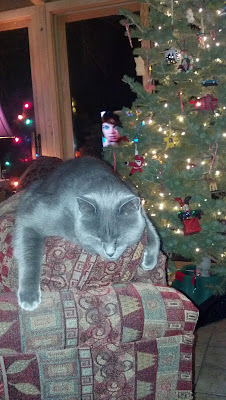A few weeks ago, in the February issue of 5280 Magazine, there was an intriguing article about the United States' craft brewing capital: Denver, Colorado. Entitled The Ultimate Guide to Craft Brewing in Denver, it highlights each of the 22 breweries located within the city limits, focusing primarily on each brewery's style and selection. After a discussion with my buddy Chris about the article and Denver's craft breweries (check out his blog: Livin' It Up Denver - he's also joined me on a few homebrew adventures), the idea for Brewed Madness was born. Just as Colorado has the Great American Beer Festival and Denver has the Denver Beer Fest (a homebrewing competition), sports fans everywhere have March Madness - so why not combine to the two into something that is both sporting and libatious?
 |
| 5280's Ultimate Guide to Craft Brewing in Denver |
Denver has a rich history when it comes to beer. Indeed, it is whispered that Denver's first permanent building back at its founding was a saloon. Whether or not that is true, I can tell you that the first city government was formed in 1859 within the walls of Apollo Hall saloon. By 1873, Adolph Coors had founded his eponymous brewing company - relying on 40 of Colorado's natural springs - and began producing what became a local favorite, known as "Miner's Banquet." Then, tragedy stuck: prohibition hit Colorado in 1916. Coors was converted to a malted milk manufacturer, saloons became soft drink parlors (though speakeasies were plentiful), and crime skyrocketed as citizens sought out whatever hooch they could get their hands on. After the Noble Experiment was abandoned, Denver (and Colorado) began the long road to recovery.
 |
| Denver in 1898 |
As for each showdown, we decided it would be best if we standardized our rating system well before entering any of the breweries and settled on four criteria: Atmosphere, (a single) Beer, Economy/Pricing, and Staff. I think each of these criteria are intuitive, perhaps with the exception of the single beer. As much as I'd like to sample every offering made by a brewery (and probably will over time), we simply don't have the time or money to do that at 22 individual breweries in a single month. Thus, we will only be sampling one beer per brewery to make sure this crazy thing can happen. That said, those breweries that advance to the next round will carry that brew score with them and have another sampled the next time (for a total of 25 possible points). Those breweries starting in the Second Round will have two beers sampled to keep the scoring fair. Additionally, the Final Round will see all remaining beers sampled - because you can't be Denver's Craft Brew Champion if everything hasn't been put on the table.
So, tomorrow we will begin our very own version of an exciting tournament in the heart of Denver at Renegade Brewing Co. and Denver Brewing Co. This contest, like each that follows, will be accompanied by a blog post giving a play-by-play from both me and Chris and a final verdict on which brewery will advance to the next round. Once all is said and done, and the victor is crowned, we will write something more formal and put it up on Chris' blog, Livin' It Up Denver (and probably on here, too), in an attempt to condense down a month of beer and breweries that only a couple of madman would take on.
















